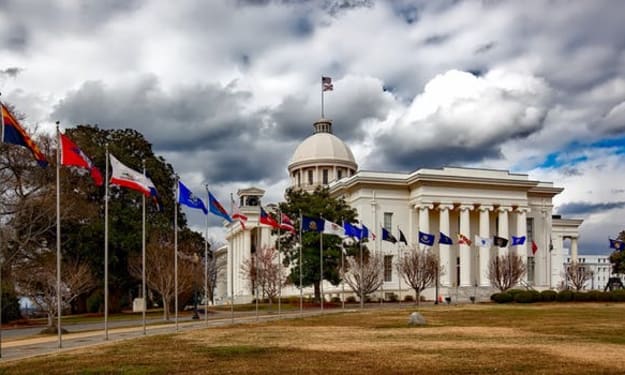Have governments kept up with the digital age?
Are we still governed by the pen and paper systems

Have governments kept up with the digital revolution?
Are we all still governed by ”pen and paper” administrations, while living in the digital age?
Modern technology has the effect of reducing the need for human activity in each and every aspect of life; yet the number of people employed by governing authorities, national and local, keeps increasing. All paid for by a decreasing number of people earning money in the “private sector.”
Definitions used :-
Government paid people and industry. This will include health care staff who are paid by a nationalised entity, such as the British NHS. It includes armed services and national security services and all who work for and get paid by any form of governing authority. So this includes all those directly employed by local authorities as well as national governments. Administration, bureaucracies and physically workers.
Semi Private sector people and industries where the payments come from tax income but via a separate entity. This includes consultants who work at advising any government agency. It includes those who work in public service industries which are not directly controlled by a governing authority but where the money is still from the tax payers. So in Britain the BBC staff, the businesses who sell support services and equipment to such as, the armed forces or the nationalised health care industry. This also includes those employed in the so called “arms length” public services that are not officially listed as government departments; in Britain this will include housing associations which control housing where the local authority has a say in the choice of tenants and the rents to be paid. The more this sector is thought about, the larger it grows. The left of centre governments of the Blair and Brown administrations used the “arms length” deceits to reduce the official government debt and the number of employees but the services increased and regardless of what was on the “books” the state was and is still paying for these services. The infamous private finance initiative was originally a Tory political idea but enhanced and magnified by the Brown era of financial management of the nation. Like most ideas which are political, they are not necessarily good practice outside the very introvert political sphere. The total cost of these initiatives has to eventually be paid by the tax papers and the total cost is usually a great deal more than the financial sector put in. theses two sectors, semi private and government paid, can be put together as “tax money dependant areas.”
Private sector. People and industries where income is not directly, or indirectly from the tax payer. These people and enterprises pay tax but get no tax payers money in any way. These are not tax money dependant. In modern times it is probable that the largest number of paid employees in this section of the economy, work in the retail and hospitality industries. Since they are not actually generating products, their value to the basic strength of a nations economy, is questionable.
The semi private sector is totally dependant on the amount of money a governing authority spends and so it has to be dependant on income gained from the private sector. Governments and even localised governing authorities, get money from taxation or loans. Loans in any form have to be eventually repaid and a form of interest or cost is also to be paid. Thus the financial sectors which loan money to governments ( buying government bonds etc.) also have, at least part of their business in the semi private sector.
In socialist (at least nominally socialist) dictatorships, the private sector does not officially exist and so everything is always from the tax payers. That is the theory; it appears the practice is a little more confused.
In Britain, and it seems in most democracies, the private sector is getting smaller relative to the total sum of semi private and government paid sectors. This is a very disturbing path and the longer we travel down it the more disturbing it becomes. This situation is prevalent in most nations. It is an odd fact that in Britain, Prime Minister Thatcher is hated by the left for all the “cuts” she allegedly made to the work force, but the statistics show there were more state employees by the end of her premiership than at the beginning. The age demographics of every nation is tending to have more and more “not economically active” people who are not in any of the above defined sectors. The change to artificial intelligence and fully automated systems is going to increase the disparity between those employed and those unemployed or retired. All democratic governments try to keep unemployment; that is those who could be economically active but are not, due to the lack of available work; to a minimum. This is an electorally sensitive issue and so the temptation, especially seen when left of centre governments are in power, is for the state to employ more people. It is a very powerful temptation. The result of all this is the creation of a sector of the population, in full employment but in reality they are surplus staff, doing work that should be done by computers or; surprisingly often; need not be done at all. Those nations with left of centre political stances, most notably the nations still within the EU, are very prone to this factor. It is a drain on economic growth for several reasons but one of these is that efforts by those workers who should not be there, seeking to justify their employment by the ever increasing amount of “red tape” they invent. Another obvious factor is the cost of paying this surplus work force.
In the digital age the ratio of private sector to tax dependant sectors should and must be changed.
Just about every nation was formed in a period of history where personal travel dictated the flow of information. A fast horse and a dedicated rider were the super fast digital highway of the period. We still have the same geographic local area boundaries within each nation, We all still have the same breakdown to smaller and smaller units of democratic governance, counties, districts, parishes, it does not matter what they are called, they were formed and organised when face to face conversation, or hand written letters were the only way of transferring information around the nation. This is no longer the case but the political structures remain the same. We still have police forces organised around artificial area boundaries. Why? The criminals probably do not know which borough or area they are operating in, so why are the police administrations organised this way? Why are lawyers so expensive? Much of their work can be in-putted directly by the “customer” so why are their charges for wills, divorce etc. so very high? Why do hospital doctors have secretarial staff? It is certain that a brain surgeon has the intellectual capacity to type their reports into a computer that automatically send this to where ever it is required. The cost of the non productive areas of life should have been greatly reduced by the digital revolution yet it has not. Why? Is it because those who control the non productive areas also control governments and all of our lives? Is it because the bureaucrats who would have to make the changes, are the same people who gain salary increase and status by having more people “working” in their departments? What ever the cause, it does need to be faced and the ratio between tax payers and tax money dependent people, needs to be radically changed.
Modern technology should be used to improve democracy at every level. Local referendums should become common, a voter goes to a polling station presents evidence of a right to vote, goes to a booth; the referendum question is on screen, voter presses a yes button or a no button. The vote is instantly added to all the others and the result known within an hour of poll closing time. The same system should be used for local and general elections, the only difference being the voter presses the button next to name of candidate they wish to vote for. Postal votes would not be involved those not able to reach a polling station should be able to nominate a verifiable legitimate proxy voter who does it for them. If the technology involved also involved checking that only those with a right to vote, do so then they whole system is speeded up and the costs greatly reduced. More local and national referendums mean more democratic control by the voters. Welcome to the digital age.
About the Creator
Peter Rose
Collections of "my" vocal essays with additions, are available as printed books ASIN 197680615 and 1980878536 also some fictional works and some e books available at Amazon;-
amazon.com/author/healthandfunpeterrose
.






Comments
There are no comments for this story
Be the first to respond and start the conversation.